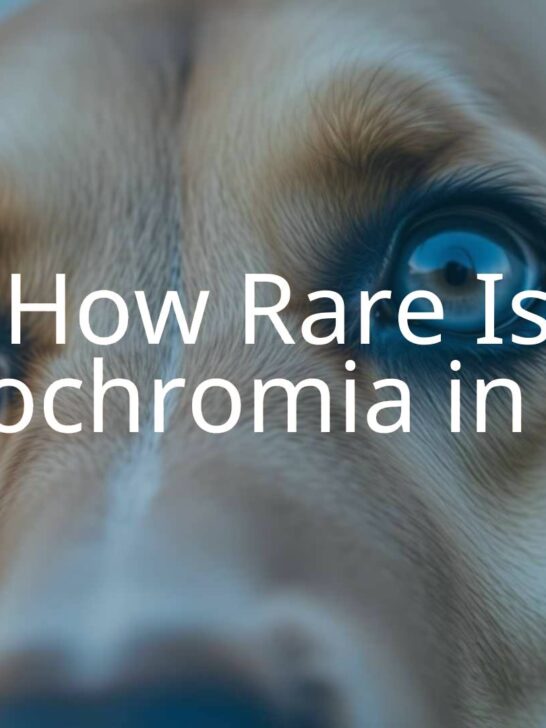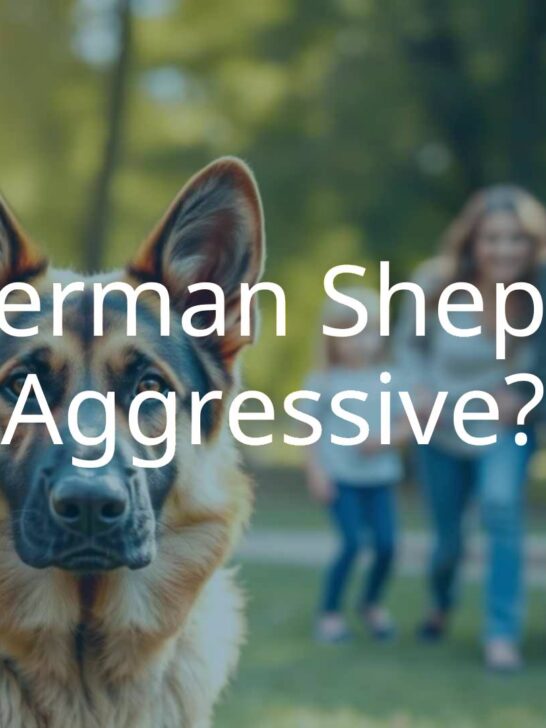Should I get a Great Pyrenees or a German Shepherd? Aspects to consider
One of the most critical steps to take before getting a dog is carefully selecting the right breed or mix. There are endless numbers of different breeds available; each one was developed to exhibit certain behavioral and physical aspects.
Just because you like dogs doesn’t mean you’ll enjoy owning every single breed available; in fact, many people end up having a miserable experience when they select the wrong breed for them. Sadly, when dog-owner mismatches occur, the dog often ends up being surrendered to a shelter.
If you’ve decided you want a large working dog, you may have picked out the magnificent Great Pyrenees or the well-known German Shepherd as possible breed candidates for you to own.
They are both breeds developed to work as guard dogs and to protect sheep; they must be very similar, right? Well, not really.
They are very different in many ways. Below we will discuss and contrast these two breeds to help you decide which one, or neither, is right for you.
An overview of the Great Pyrenees
According to the Great Pyrenees Club of America, The Great Pyrenees is one of the ancient livestock guardian breeds.
They are thought to be descended from large flock guardian dogs that were used in Asia beginning around 10,000 years ago.
Some of these dogs were brought to the Pyrenees mountains around 3000 BC to help guard livestock, where they became genetically isolated and developed into the majestic white dogs they are today.
In their role as livestock guardians, the Great Pyrenees dogs live outside in the mountains or fields with their flocks, and without any human guidance are expected to protect the flocks against predators by roaming around, barking loudly to scare away predators, and, if necessary, battling with and killing predators.
Very young Great Pyrenees are “imprinted” on the species they are expected to guard, most often sheep, by letting them grow up with the livestock rather than growing up in close contact with humans.
They have also been used to guard estates, where again they are expected to act on their own, patrolling the grounds, barking frequently, and, if necessary, attacking and killing predators and, sometimes, human intruders.
As you can imagine, selecting for dogs that work independently of humans has resulted in a breed of dog that can be very difficult to train.
Most Great Pyrenees find the concept of obedience to be puzzling. With a great deal of positive reinforcement-based training, they can learn the meanings of basic cues like sit, and a few individuals with very patient owners have managed to earn obedience titles.
Still, in general, these dogs will never develop an excellent recall, are rarely seen at dog sporting/obedience events, and have minds of their own.
They also tend to bark a lot, especially at night, which can result in problems with neighbors and your own family.
Besides, some can be quite aggressive towards other dogs, and they have been known to try to kill anything invading what they perceive to be their territory, including dogs, cats, deer, birds, and people.
On the plus side, they tend to be rather lazy and are quite content to roam around in a sizeable well-fenced yard and take a lot of naps.
They aren’t a breed that requires daily two-hour runs or much attention at all. They thrive in homes that use them for their traditional purpose of guarding livestock and estates; they don’t do very well in homes looking for the next agility champion or a jogging companion, and they aren’t suitable at all for apartment dwellers.
An overview of German Shepherds
According to the German Shepherd Dog Club of America, Unlike the Great Pyrenees, German shepherds are a very modern breed, having been developed starting in 1889.
They were created in Germany by selectively breeding local herding dogs; there were also four deliberate crosses with wolves, and some other breed types may have been crossed into the lines. There was also extensive inbreeding during the early years of creating the breed.
According to the ScienceMag, Although the German Shepherd superficially resembles other herding breeds like the Belgian Shepherds and the Dutch Shepherd, genetic studies have found they cluster far away from the other herding breeds, grouping with the Berger Picard and Chinook.
Shortly after the deliberate construction of the German Shepherd, it began to be used as a police and guard dog and was heavily used in Germany during World Wars I and II as war dogs. Very few German Shepherds have ever been used to herd sheep.
Currently, the breed is rather sharply split into American and European types, and among those, it is also divided into working, show, and pet lines. These various lines differ in size, conformation, temperament, energy levels, and levels of working drive.
Very different from the Great Pyrenees, German Shepherds excel at obedience. They live to work, and an ideal German Shepherd never does anything of its own accord; the sport that was invented to test the working abilities of German Shepherds, Schutzhund, strongly emphasizes complete obedience at all times.
Also, unlike a Great Pyrenees, a German Shepherd isn’t going to be content to hang out in your back yard. These dogs need to be exercised daily, and more importantly, they need to be given a job and a lot of regular obedience training.
A physical comparison of the two breeds
The Great Pyrenees
The Great Pyrenees is classified as a giant breed of dog. Males stand 27 to 31 inches tall and weigh 110 to 130 pounds, while females stand 26 to 31 inches tall and weigh 95 to 115 pounds, but in the US, many specimens are significantly larger than the sizes listed in the official breed standard.
The dogs have a thick, medium-length double coat with a neck ruff and leg feathering. They are predominantly white but can have gray, yellowish, or tan markings on their head and back. Their nose should be black and they should have a rim of black around their eyes.
The general impression a Great Pyrenees should impart is a huge, sturdy, yet elegant dog. They should be very slightly longer than they are tall, have a level back, and balanced front and rear angulation.
German Shepherd
The German Shepherd comes in a fairly wide range of sizes, depending on which line the dog is from. European working lines can generally be considered to be medium-sized dogs, while some American show lines are considerably larger than the breed standard calls for and technically fall into the category of giant dogs.
The breed standard says males should measure 24 to 26 inches at the shoulder and weigh 68 to 88 pounds, while females should be 22 to 24 inches tall and weigh 49 to 73 pounds.
They have a thick double coat; most dogs are short-haired, but there is a long-haired variant. They are notorious for being very heavy year-round shedders. Most of them come in red or tan with a black saddle and muzzle, but they can also come in sable and all black.
The breed standard says these dogs should be slightly longer than tall, and the withers should be slightly higher than the hindquarters, but the back should be straight and very slightly sloping. The hind legs should be slightly more angulated than the front.
Currently, there is a great deal of controversy in the breed in regard to “ideal structure.” All of the original pictures of old-time German Shepherds show an almost level back and only a very minor degree of over-angulation of the hind legs relative to the front legs.
Most working-line shepherds continue to conform to this structure. However, many breeders, especially American show breeders, have been selecting for dogs with a roached, severely sloping back (not allowed according to the breed standard) and extremely over-angulated hind legs.
This structure allows the dog to perform a very flashy extended trot in a straight line, but impairs the dog’s ability to do anything else, like jump, make sharp turns, walk and run normally, and so forth. It is also possible these extreme types suffer from chronic pain due to their abnormal conformation.
The overall impression of a German Shepherd should be of a very alert, powerful, extremely athletic animal. The dog should come across as looking noble.
A comparison of genetic health issues
The Great Pyrenees
Although generally considered a healthy breed, it is essential to make sure your breeder has tested both parents for hip dysplasia before breeding; however, only around 10% of these dogs test positive for hip dysplasia.
According to AKC, They also have a low rate of progressive retinal atrophy and patellar luxation. Like all giant breed dogs, they are prone to developing osteosarcoma and bloat. The estimated lifespan is 10 to 12 years on average.
German Shepherds
Due to intensive inbreeding during the development of this breed and poor breeding practices, German Shepherds are plagued with a large number of genetic health issues.
It is important to ask your breeder if their lines are affected by any of the following conditions, and whether the parents have been tested for and cleared of the following issues:
- DNA mutations that cause degenerative myelopathy
- Hip dysplasia
- Elbow dysplasia
- Spinal stenosis
- Von Willibrand disease
- Exocrine pancreatic insufficiency
The expected lifespan of a German Shepherd is 9 to 13 years.
Related Post: Great Pyrenees German Shepherd Mix: Why Is the Unique One of the Best Devoted Family Dogs




















